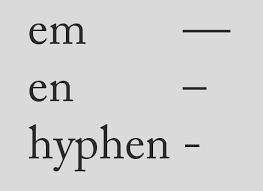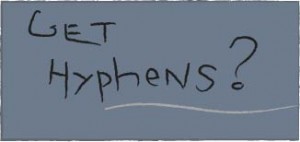It’s clear that these three dash types don’t get the respect they deserve—as indicated by the fact that many of you are wondering what the heck I’m talking about.
Yes, it’s true. Three different dashes, each with distinct uses:
– Short (the hyphen or dash)
– Medium (the en dash)
— Long (the em dash)
Getting these dashes right is important, even though it seems a minor punctuation detail not worth bothering over (and most writers don’t). Proper use of the em dash, en dash, and hyphen distinguishes you as a competent writer and expands your expressive options. Unfortunately, many business people have little time to parse such detail, and frequently, in fact more often than not, don’t bother.
So, how is each of these distinct dash types used? Continue reading Em Dash, En Dash, or Hyphen (Dash)?








